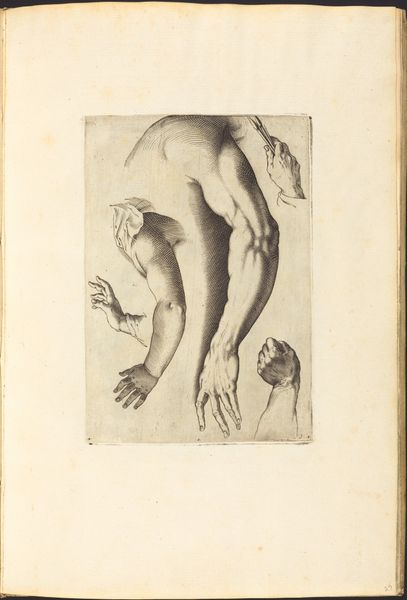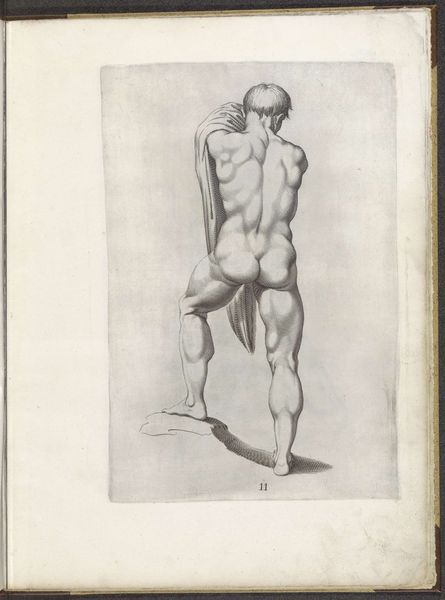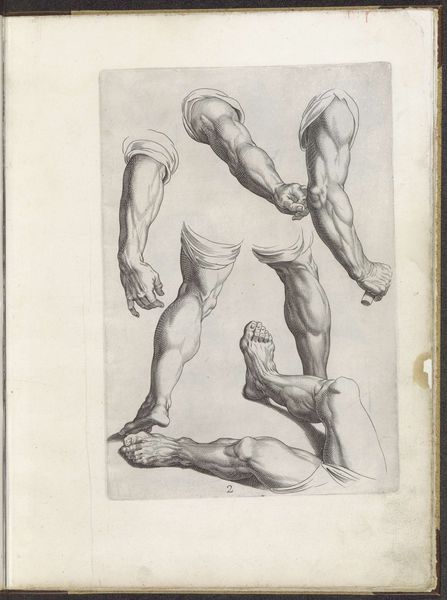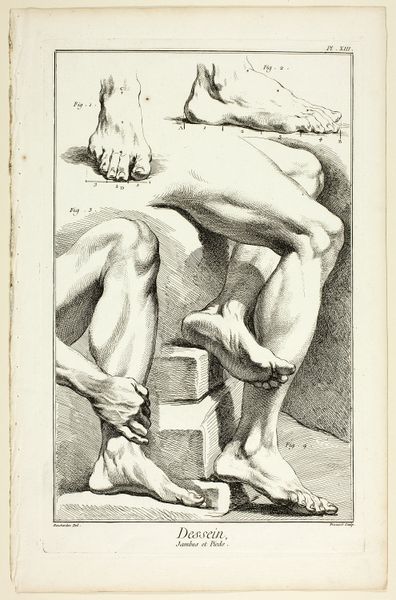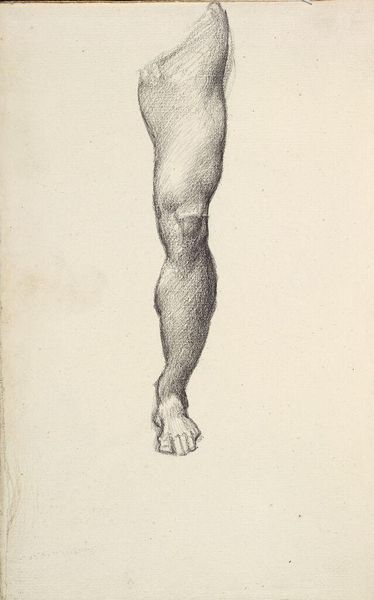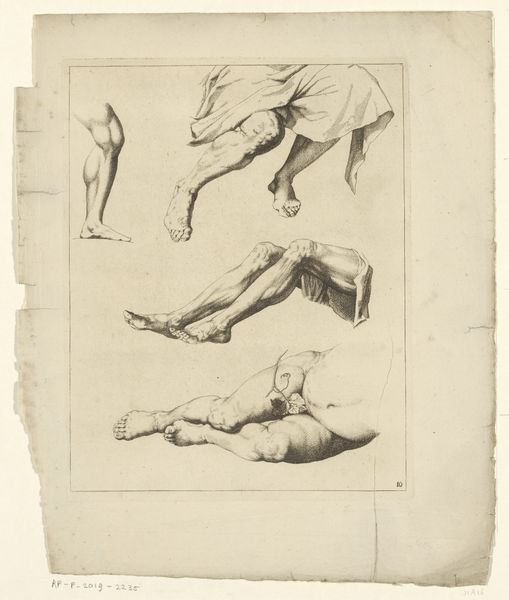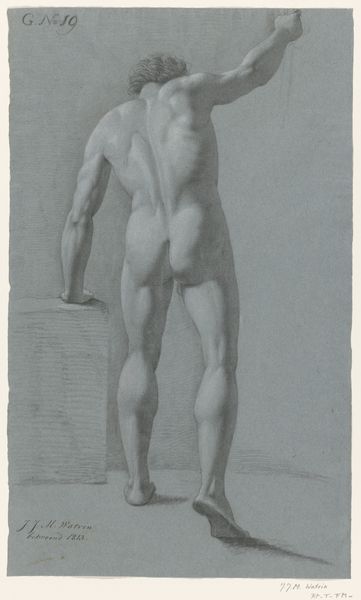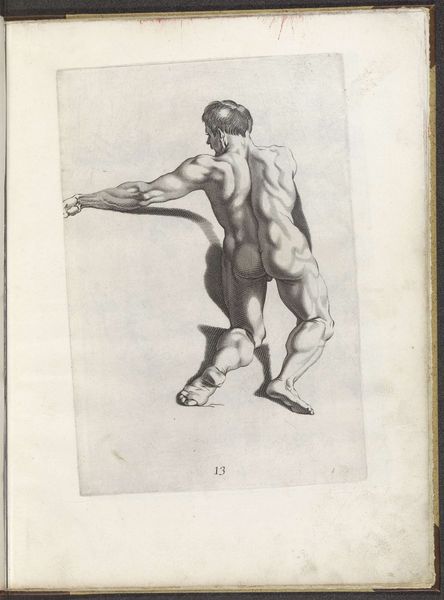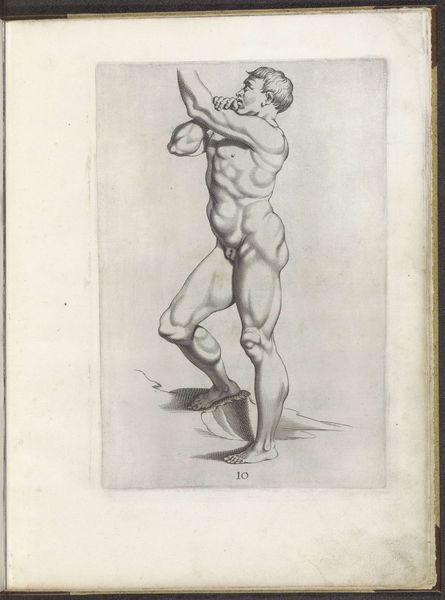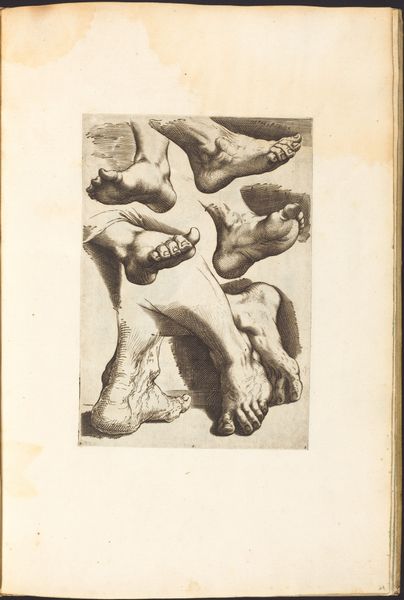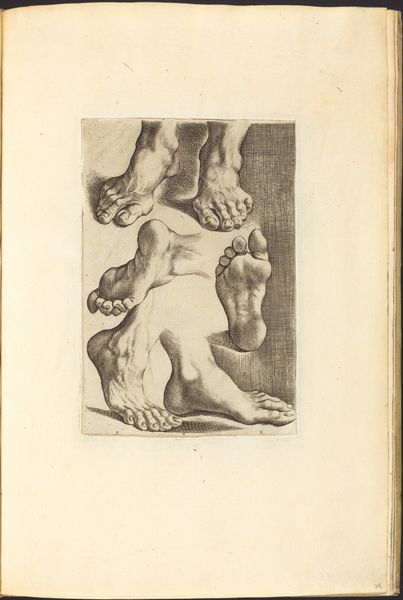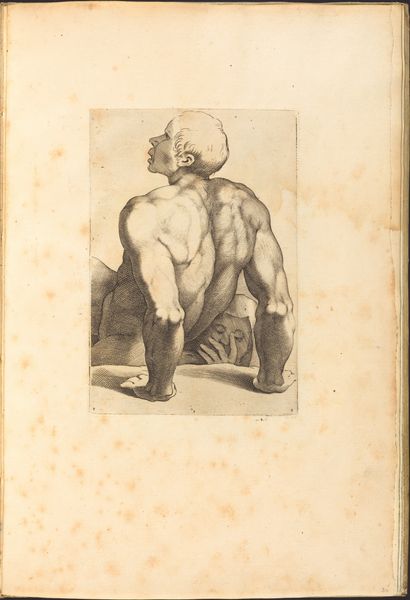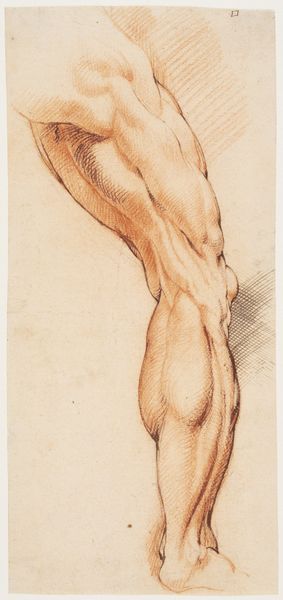
drawing, print, etching
#
drawing
#
baroque
# print
#
etching
#
old engraving style
#
figuration
#
academic-art
#
nude
Copyright: National Gallery of Art: CC0 1.0
Curator: The anatomical precision is remarkable, wouldn’t you agree? Editor: It feels incomplete, unsettling somehow. Like a fragment torn from a larger narrative or study. The stark contrast also evokes a powerful sense of isolation, of disembodiment. Curator: That's a perceptive reading. What we are seeing is a print from a drawing book by Luca Ciamberlano, dating from around 1610 to 1620. It's an etching of the lower body, most likely intended for other artists as an exercise in depicting human anatomy. The Baroque style emphasizes drama. Editor: The very fact that the focus is solely on the legs transforms their cultural meaning. Legs are active things, enabling motion, exploration—in effect, a foundation for self-determination and agency. Rendering them in such precise detail almost hyper-realizes their function, stripping the image bare of metaphor. What is Ciamberlano telling us by focusing on this small part of the human form? Curator: During this period, there was renewed interest in the classical ideal but the Roman Catholic Church strongly influenced interpretations of nudes. In that era, a concentration on physicality alone, especially through academic study, can imply human fallibility, not perfection. These are simply limbs depicted for technical understanding, nothing more and nothing less. It strips away layers of accumulated meaning. Editor: Still, I'm left pondering the implications. The choice of body parts transforms these limbs into synecdoche for something greater; perhaps, this academic exercise points at the era's fixation on dissecting the body. It suggests mortality, human imperfection... vulnerability even within a work so focused on idealized form. Curator: I concur that the work pushes past pure anatomical depiction into a dialogue between form, technique, and philosophical awareness. We've explored the rich, almost unnerving stillness that underlies what seems at first to be only a technical drawing, as well as its implicit commentary on the human condition. Editor: A worthwhile encounter, indeed.
Comments
No comments
Be the first to comment and join the conversation on the ultimate creative platform.

